During the winter months it was difficult to find something to eat, but there is plenty of life in the sea – or there was.
On a late winter’s morning on the east coast of Scotland, just a few miles north of Arbroath, the rock pools are fizzing with life and the gulls circle the red sandstone cliffs. The puffins and guillemots may not have arrived yet but the fishermen are out in force. This is the best time of year to catch a fat cod. Granted a few decades ago, the catch would have been bigger but sea bass, thornback ray, scorpion fish, wrasse, pollock, ling and flounder can still be caught, and of course mackerel in season. At this time of year the cod come inshore to feed-up for spawning before returning to the cooler deep waters in the summer.
I have come out with Jake Chalmers, Manager of the Scottish Sea Angling Squad for the home internationals. This means they compete with teams from England, Wales and Ireland over a week in June to see who can catch the biggest fish. They are hoping to do better than their compatriots in the rugby…
Fishing competitions are a serious business up here. Every other weekend over the winter ‘rover matches’ happen between Arbroath and Montrose. Fishermen clamber over the rocky coast to see what they can catch. It can be an ‘extreme sport’ with fishermen strapping themselves to the rocks in storms and sadly every year there are casualties. But mostly it is a gentle pursuit. The weigh-in on Victoria Quay, where the winner is awarded around £200, is the most nerve-wracking moment before everyone retires to the Commercial Inn for a well-earned pint. Usually up to 100 cod are landed and taken home for the table. The biggest cod caught in the competition was 21lbs but nowadays they are more likely to between 3 and 10lbs. Jakes says in the past 12 or 13 cod could be caught in one day but now you are lucky to get one or two. He blames the trawlers, who have damaged the sport of sea-angling as well as the health of the world’s oceans.
“What they catch in one net, we would not catch in a lifetime,” he says.
The End of the Line?
The North Sea, that used to feed much of Britain, has been overfished for decades. As Charles Clover warns in his book and film The End of the Line, we are in danger of running out of fish. My predecessor as Environment Correspondent at The Daily Telegraph exposed an industry out of control; where technology is used to scoop every last fish out of the sea, quotas are ignored and the majority of fish are thrown overboard simply because they are not the right species for the supermarket. In the North Sea we have lost around 90% of the cod that ‘should’ be there. At one point we were warned cod in the North Sea could even go extinct . In Europe as a whole more than 80 per cent of fisheries are overfished and three quarters of fish stocks around the world are being exploited at, or well beyond, sustainable limits. You can’t help thinking how could a government and people be so stupid as to lose such a valuable renewable resource?
“As a method of mass destruction,” writes Clover. “Fishing with modern technology is the most destructive activity on Earth.”
Imagine for a minute if the African savannahs were stripped of antelope and lions. We wouldn’t sit back and let vast weighted nets scrape the life off the surface of the earth, so why the bottom of the sea?
In his excellent book The Unnatural History of the Sea Callum Roberts describes what we have lost. A world where there were so many turtles off the Americas sailors couldn’t sleep for them banging against the hull, where the North Sea was clear thanks to vast oyster beds and cod were so plentiful around Newfoundland ‘a man could walk on them’…
A more important message from his book perhaps is that we can reverse this trend. We may be unable to imagine the abundance that went before but we can give the oceans a chance to survive before it is too late. If we don’t it will not just be the fish that suffer, the whole planet relies on healthy oceans for our air, weather and crops.
The return of old king cod?
Recent studies have shown the cod stocks in the North Sea are recovering as fishermen are prevented from overfishing by quotas set by Europe. The Scottish Fishermen’s Federation say it is time they were allowed to increase their catch once more. But the Marine Conservation Society urges caution, pointing out that cod are still not at the ‘sustainable’ point where there are enough breeding adults to sustain the population in the long term.
Fortunately, there are no restrictions on hobby anglers. There are two million sea anglers in Britain and it is agreed that the fish landed by them are insignificant compared to trawling. Indeed rod-caught fish bring in far more to the local economy than commercially-caught fish due to anglers staying in hotels, hiring cars and buying food. Furthermore, like many people who hunt or fish in Britain, they have an utmost respect for their quarry. Over the past few decades they have watched as their catches get smaller and smaller and they are active in doing something about it. The Scottish Sea Angling Conservation Network encourages anglers to “catch and release” and has been instrumental in setting up shark tagging programmes around the coast so the health of the sea can be monitored and maintained.
I worry whether I should put anything I catch back but am reassured by Prof Roberts himself that anything I catch will be… a drop in the ocean.
“Don’t beat yourself up!” he says.
Something for the pot
Jake is keen to get me “something for the pot”. He has bought along a 12ft rod that is cast off the coast in a short swing, quite different from the elegant cast used in trout or salmon fishing. Sea angling is in many ways a very different sport. Because it is free and you don’t need permission it attracts people from all walks of life. Jake works as a logistics and transport co-ordinator at Ninewells Hospital in Dundee. I imagine him at the heart of NHS chaos longing for the sea.
“You can switch off from everything out here,” he says wistfully.
The 63-year-old caught the bug from his uncle, who came out of the merchant navy with a fishing rod from Japan with braided silk lines. From that moment on, he spent every weekend he could out in the fresh air on rivers and beaches.
“All fishermen are optimists,” he says. “Because if you were a pessimist you would not do it, what keeps you going is hope.”
We bait the weighted hooks, so enormous looking to someone used to fishing for trout, with peeler crabs. The bait, dug up in the summer and kept in the freezer stinks and I am assured the cod will smell it 700m away.
We replace the bait every 20 minutes, as otherwise it is eaten by carnivorous crabs. The cliffs are deepening to ochre and the swell is beating dangerously close to the rocks. Then, just as we are giving up hope there is a bite. Jake reels in the cod and I dispatch it on the sharp rocks.
And here’s the thing: It is easier than killing a cute fluffy animal, though PETA say fish do feel pain. The charity point out that one trillion fish are killed every year for food, most die in the haul of a ship or are gutted alive. I wonder is a knock on the head better?
Notice how easy it is for me to publish a picture of a dead fish on this blog as my title photo. Not something I would have done with the sheep or the pheasant, simply because it is too upsetting for most people. Perhaps it is because we conveniently forget how damaging and unsustainable commercial fishing currently is. Although many vegetarians eat fish, if you want to help the environment you would be better eating the occasional steak. But more than that it is because it is cold-blooded, it is not like us.
Yet in a way this animal is more beautiful than any domesticated animal I have eaten. She is over 35cm (the minimum landing size) and probably around two-years-old. Cod can live up to 20 years and grow 6ft long. Remember she is wild, she may have migrated as far as Greenland. With her powerful muscled body she has explored a world of kelp beds and mud, green seas and icebergs. She is grey, speckled in olive spots, with a natty white lateral line. Her chin barbel, used for searching for food, gives her an aristocratic air. It is only recently I have learned to identify the different species of fish, which is pretty shocking when you think about it. Imagine not being able to tell the difference between a sheep and a goat? Her eyes are clear, something I am not used to seeing as in most supermarkets and fishmongers they are cloudy, i.e. not very fresh.
Jake feels the belly and then gets out a pair of delicate sowing scissors so he can remove the roe without breaking the sack then deftly guts the fish on the rocks.
Many of the fishermen at competitions will give fish away. Jake gives his catch to his local care home in Dundee. His grandchildren will not eat the fish, preferring like most of us odourless, boneless, colourless, processed fish.
“They will not eat my fish – only battered or fish fingers,” he says.
They are missing out. The fillet I take home and cook is exquisite. You can see why it is still Britain’s favourite fish (after salmon). Yet we should be eating different species. As Hugh Fearnley-Whittingstall pointed out in his Fish Fight series, we should try fish that would in the past have gone to waste like coley or pouting. Choosing fish can seem complicated, as most supermarkets claim to have ‘sustainably sourced’ products. It is impossible to know who to trust so I would advise looking for the Marine Stewardship Council label and if you are dining out to check the restaurant on Fish to Fork.
The cod roe is even more delicious and the first time I have tasted the dish. As Jake has advised, I put it in a sandwich bag and boil it for a few minutes. When it comes out it slices off in a creamy mousse. Roe on ‘plain breid’ toast feels deliciously extravagant, the kind of thing a butler would bring you for breakfast – on a silver platter.
The fillet and the roe feel like a treat, but I don’t want to take more fish from the sea so I ask the fishermen about what else I can source from the seaside – HFW style. They advise ‘buckies’ or as they are known in England, periwinkles. Every year 50,000 go to the Middle East but apparently they are quite delicious boiled up and picked out with a cocktail stick. My friend Chloe and I spend a morning at low tide puddling around the rocks and accidentally come back with the bucketful of common dog whelks – a completely different species – which we then have to put back.
Still, we have fun. It feels like spring is in the air down on the shoreline with the crabs Jake hasn’t caught yet darting beneath the rocks and the cormorants drying their wings on a distant promontory. Already, a few months into this project to only eat animals I have killed myself, I feel more in tune with the seasons and nature’s bounty we still have left.

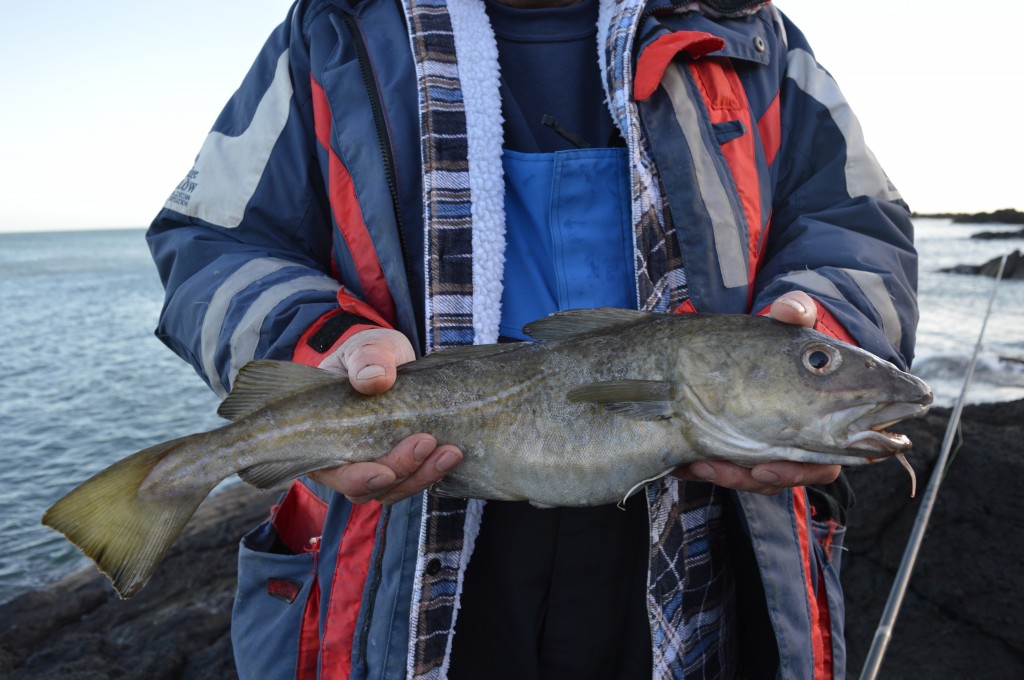
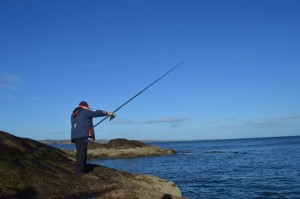
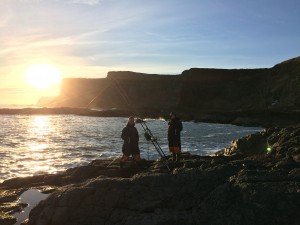
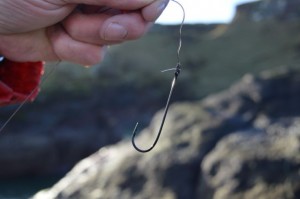
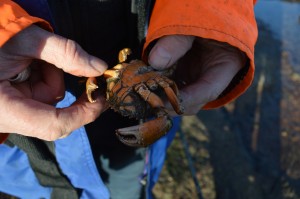
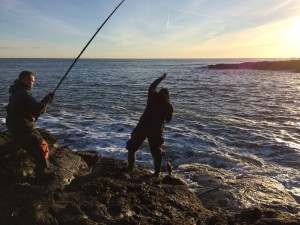
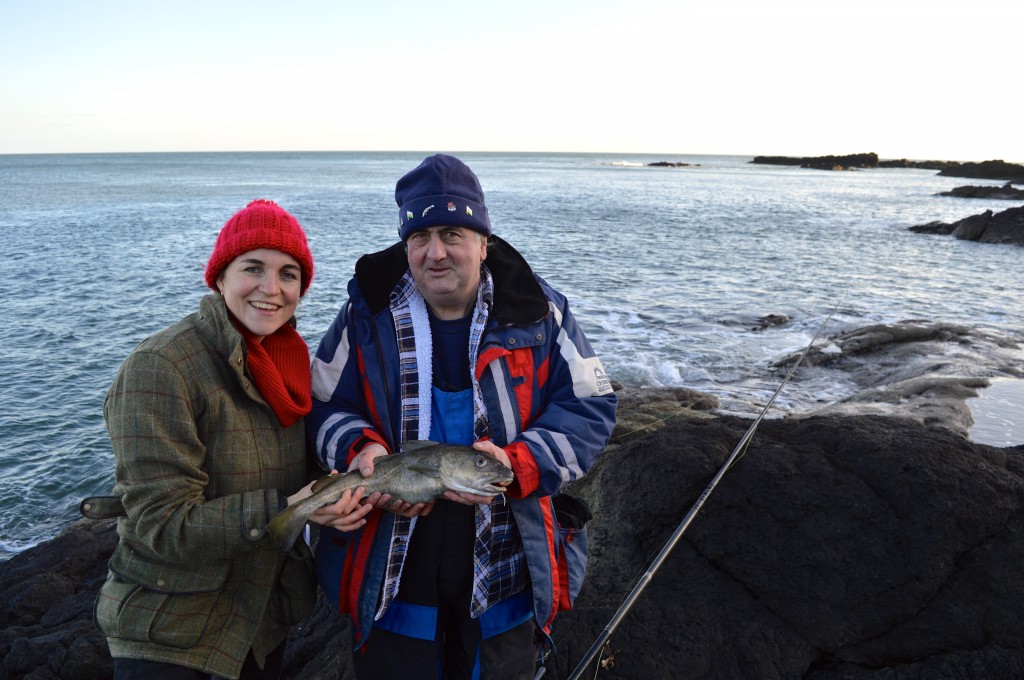
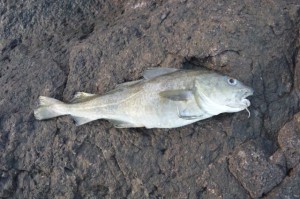
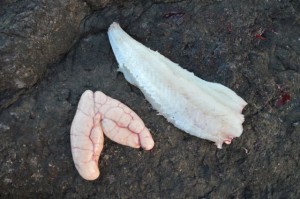
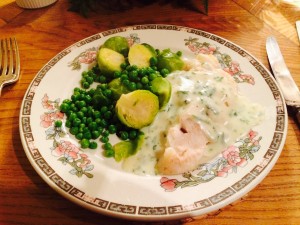
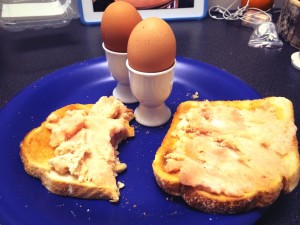
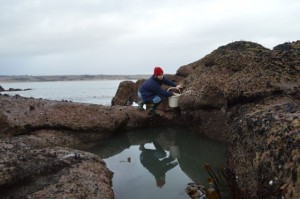
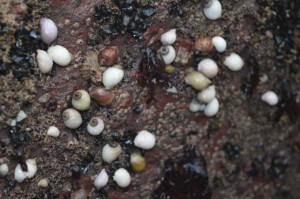
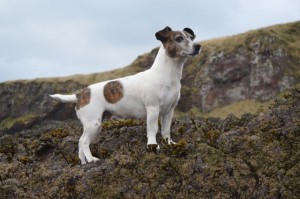

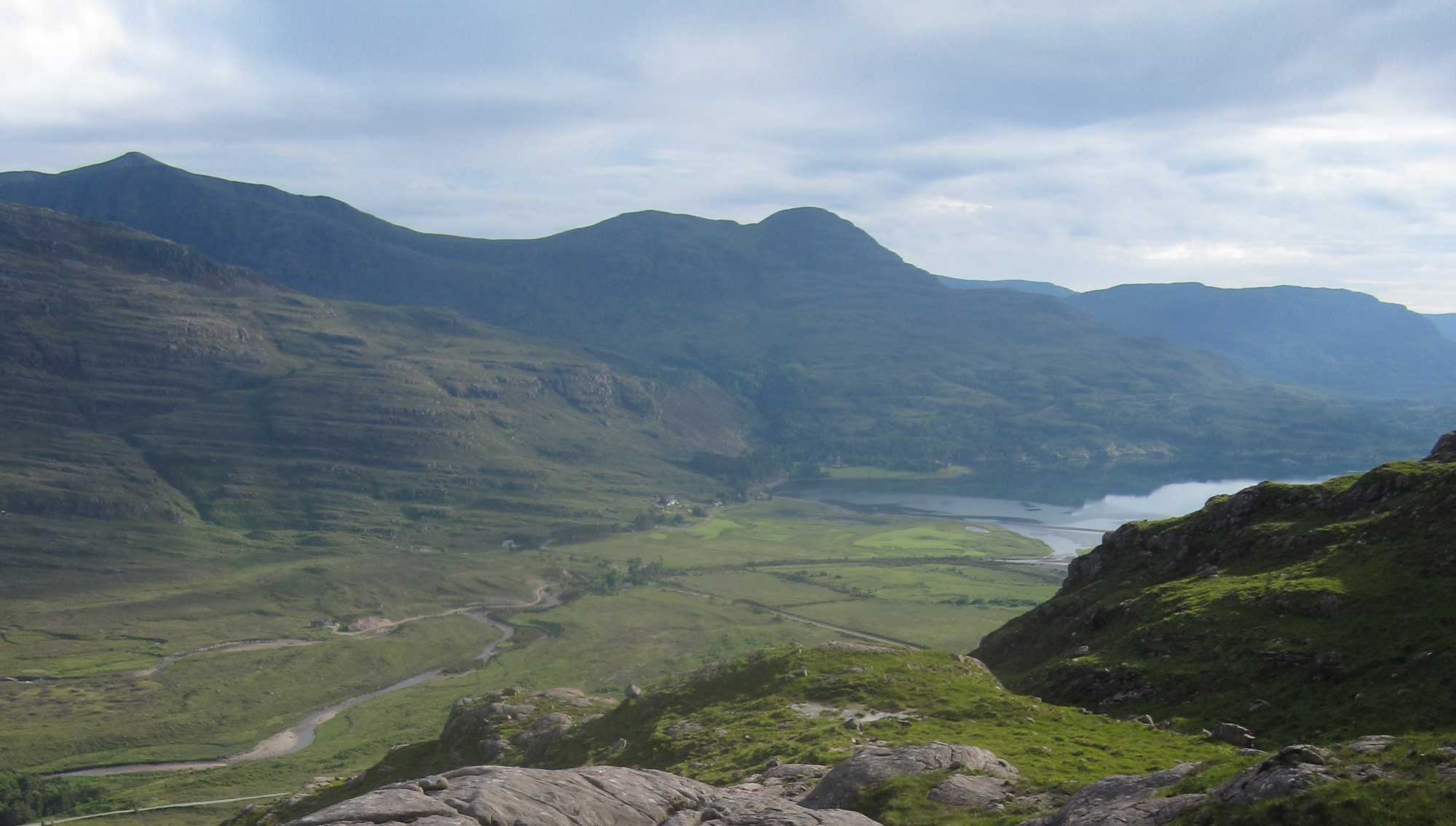
Very interesting article which covers many issues which receive little publicity and have a very low profile in public debates – specifically the damage which trawlers cause to the seabed, as well as the immense commercial pressure on UK fish stocks.
I believe that anglers need to do more to show that the sea angling sector raises much more money for the economy than the entire commercial fishing industry, and catches far fewer fish and causes less damage to the marine environment while doing so.
love the stories Lou. Let us know if you come down south to find something to eat. I would like to know whether we can buy and eat all the deer culled in Richmond Park each year. You have prompted me to look it up. Xxx
I believe you can! But the meat is sold anonymously because the Royal Parks thinks that puts people off. Personally I think they should stand by their deer management and celebrate it as sustainable meat….
I hunt deer with a rifle, and wildfowl with a shotgun and I fish with rod and line too, mainly for trout but also in the sea,and I think you are absolutely right. Keep on telling it like it should be told, and I agred with your blog on H is for Hawk too.